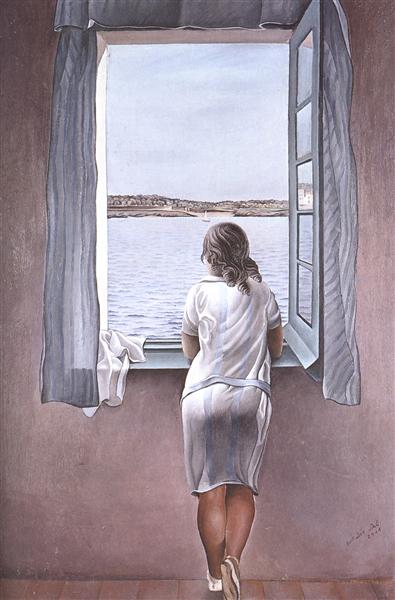The artist’s fantasies on the themes of the Gospel fill the familiar plot with new content. Only outwardly, the picture resembles a fresco by the great Leonardo. The work atmosphere is completely different. The author deliberately transfers the action of the picture to the modern space.
Above the table is a glass dome, behind which a lifeless landscape opens up: sea, rocky islands, multicolored sky. Among those sitting at the stone table, only the central figure of Christ looks alive. The disciples, bowing their heads respectfully, listen to the Teacher. Are they listening? Or do they sleep, lulled by the sounds of His voice? The viewer is forced to independently interpret the poses of the apostles. A translucent torso hovers over the table with outstretched arms.
On the one hand, he, like the Holy Spirit, unites all participants in the supper, on the other, he acts as a kind of foreshadowing of the imminent crucifixion.
The perspective of the painting is geometrically accurate. Bread halves are perfectly positioned. The students at the table are placed according to the laws of ideal central symmetry.
The airiness, purity and translucency of the figure of Christ is contrasted with the reality and heaviness of the figures of the disciples. The viewer gets the impression that in a moment everything will melt into a blue haze: the dome, Christ, the stone table itself.
The whole picture is like a sketch of a sensitive, shallow sleep, ready to be interrupted at any moment. What is the meaning of the artist in his work? Each viewer formulates the answer to this question in his own way. Someone sees in the picture only a senseless play of fantasy, someone finds in the picture a new reading of the Gospel story.
As usual in the works of the artist, the author’s position remains “open”, inexplicable, indistinct.
Year of painting: 1955.
Dimensions of the painting: 167 x 268 cm.
Material: canvas.
Writing technique: oil.
Genre: religious painting.
Style: surrealism.
Gallery: National Gallery of Art, Washington, USA.



